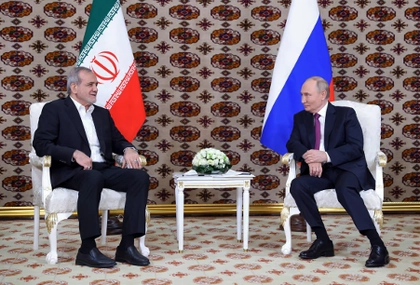Those who seek to justify Hamas’ violence as a response to restrictions on access to and from the Gaza Strip have their history back to front. The restrictions on Gaza did not give rise to the violence; it was violence that made the restrictions necessary in the first place.
In 2005 Israel withdrew from the Gaza strip, uprooting every single one of its 8000 citizens, along with their homes, schools and even cemeteries. It left behind only the Israeli greenhouses in the hope that these would support the Palestinian agriculture sector.
JOIN US ON TELEGRAM
Follow our coverage of the war on the @Kyivpost_official.
While the withdrawal was unilateral, at the time Israel and the Palestinian Authority signed an agreement on movement and access. This included the establishment of an international crossing on the Gaza-Egypt border. The crossing was controlled by the Palestinian Authority, under the supervision of monitors from the European Union. During the 19 months during which the crossing point was in operation, it was used by close to 450,000 people - some 1,500 a day.
But in 2007 Hamas took control and violently eliminated the Palestinian Authority in Gaza. The European monitors, fearful for their safety, fled - and the crossing arrangements collapsed.
The Access and Movement Agreement also included provisions for the construction of a seaport and airport, as well as arrangements for transit between Gaza and the West Bank - all frustrated by Hamas' violence and rejection of any arrangements coordinated with Israel.

The Future of Russia’s Comprehensive Strategic Partnership with Iran
This was not the first time that the movement of the residents of Gaza had been sabotaged by Palestinian violence. Under previous agreements with Israel, an international airport had operated in Gaza between 1998 and 2001. It was opened in the presence of President Bill Clinton and operated flights to Egypt, Jordan, Syria and Saudi Arabia. But the violent outbreak of the second intifada led to its closure.
Similarly, negotiations for a port in Gaza were scampered by repeated instances of arms smuggling through the sea, including an attempt to bring in 50 tons of weapons in the Karine A boat. The Palestinian fishing industry also paid the price for this continual smuggling, which resulted in a reduction in the Palestinian fishing zone which had reached up to 20 nautical miles from the shore.
Egypt too recognized the need to impose border constraints to prevent the smuggling of arms. Even President Abbas of the Palestinian Authority spoke out in favour of the Egyptian restrictions to prevent arms reaching Hamas in Gaza.
Over the years Israel has made great efforts to ease the humanitarian impact of the restrictions. In 2010 it adopted a new policy of allowing all goods into Gaza, provided that they are strictly civilian, while limiting only "dual use" items that could be utilized for terrorist activity. It also allowed the resumption of agricultural exports.
In the months prior to Oct. 7, Israel continued its efforts to alleviate economic and humanitarian hardships. Some 18,000 Gazans received permits that enabled them to enter Israel every day for work and hundreds of Gazans in need of medical treatments were admitted to Israeli hospitals.
There are multiple reports that a number of those permitted to enter for work provided intelligence to Hamas, assisting in planning its massacres. Additionally, among the Israelis murdered or kidnapped by Hamas are several of the volunteers who ferried Palestinian patients from the border to their hospital treatments in Israel.
Far from being motivated by humanitarian hardship, Hamas actively perpetuates it. In 2021, the pro-Hamas outlet Al Mayadeen reported that the organization had refused offers for a complete lifting of all restrictions in return for a cessation of hostilities with Israel. In previous rounds of violence, it has directed attacks not only at Israel but also directly at the crossing points which are the lifeline of aid to Palestinians. In the earliest stages of the current war, both the Kerem Shalom and Erez crossing points were put out of action by Hamas rocket fire.
The confusion of cause and effect that creates this backwards history is at work in the criticism of Israel's defense today. Military operations in civilian areas or limitations on the entry of fuel can only be understood once Hamas entrenchment in those areas and the theft and stockpiling of Gazan fuel is recognized.
Rewriting the past will not help the people of Gaza. The first step to a better future is getting the history right.
Michael Brodsky is the Ambassador of Israel to Ukraine
The views expressed in this opinion article are the author’s and not necessarily those of Kyiv Post.
You can also highlight the text and press Ctrl + Enter






